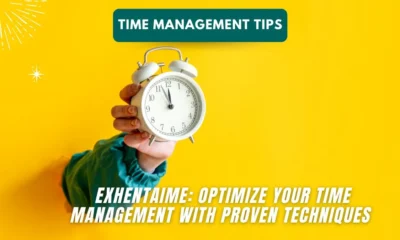SERVICES
Behind the Scenes of a Premier Real Estate Listing

Understanding the Listing Process
Understanding the listing process provides a strategic pathway for sellers entering the real estate world. This journey comprises multiple carefully orchestrated steps, each crucial to successfully selling a property. Engaging with premier real estate companies Virginia Beach, VA, sellers learn about setting the right price, analyzing local market trends, and gathering necessary documentation. These initial steps serve as the foundation for a successful listing, which can significantly influence the timeline and profitability of the sale. Often starting with a detailed client consultation, real estate agents demystify the process by aligning the seller’s goals with current market dynamics. This strategic approach is complemented by setting a competitive listing price, which requires a deep understanding of the property’s value and the complexities of the local market. Sellers benefit greatly from an informed approach, gaining confidence in the process.
Preparing a Home for Market
A vital step in selling a property is its preparation for listing. This involves a thorough assessment and enhancement of the property’s presentation. Conducting necessary repairs is a priority as it addresses potential deal-breakers that could deter potential buyers. Cleanliness ensures the space is inviting and uncluttered, allowing buyers to imagine their life. Professional home staging takes preparation a notch higher. Staging isn’t merely about decoration—it involves strategically arranging furniture and decor to highlight the home’s strengths while ensuring the space feels aspirational yet personal. According to recent studies, staged homes can sell up to 73% faster than non-staged homes, indicating the profound impact of first impressions. This showcase often leads to competitive offers and a higher sale price, underscoring the investment’s value.
Professional Photography and Videography
In today’s digital age, a property’s visual presentation is more important than ever. Professional photography highlights the property’s essence by using the best angles and lighting to showcase its features. The impact of a stunning image is significant; listings with high-quality photos receive 61% more views. Innovative tools such as virtual and 3D tours offer homebuyers the chance to experience the layout and ambiance of a property from the comfort of their home. These digital tours transcended traditional constraints by offering an immersive experience that static images cannot. The importance of such visuals in real estate is well documented in an article by the Wall Street Journal, which explores how strategic imaging techniques can significantly enhance engagement and lead generation.
Effective Marketing Strategies
A successful sale often hinges on the effectiveness of the marketing strategy. In the digital age, this means utilizing diverse platforms to reach potential buyers where they are most active. Online listing platforms, social media, and targeted email marketing campaigns ensure wide visibility and engagement. Writing an arresting headline and a compelling description creates curiosity and can set a listing apart from thousands of others. However, traditional marketing tactics, such as print advertising and networking with local agents, still have their place. These ensure that the property reaches a broad audience, extending influence into both local and national markets. Combining these methods enhances reach, resulting in more potential buyers and a successful sale.
The Importance of Open Houses
Open houses are crucial tools for engaging potential buyers face-to-face. They allow for direct interaction and create an environment where buyers can explore the property more thoroughly. This hands-on experience is pivotal; it provides a real feel of the property’s potential and sparks emotional attachment, which is key to purchasing decisions. Real estate professionals manage these events by focusing on staging and storytelling, guiding prospects through the home in a way that highlights its best features. Effective open houses can generate interest, leading to multiple offers, thereby giving sellers favorable negotiation leverage.
Navigating Client Expectations
An agent’s role also involves managing client expectations, a nuanced aspect of real estate. This requires clear communication and understanding market trends to provide realistic outlooks. Maintaining transparency about potential challenges ensures sellers remain informed and equipped to make the best decisions possible. This part of the process is essential for building trust and involves managing emotions and expectations. Should the market not respond as initially projected, having an agent who can pivot strategies and maintain client confidence is invaluable.
Handling Offers and Negotiations
Receiving an offer is an exciting milestone in the home-selling process. Here, the agent’s negotiating prowess is tested. Each offer necessitates careful evaluation against the seller’s goals and current market analyses. Seasoned agents approach negotiations with a tactical mindset, aiming to meet and exceed client expectations. In this phase, mediating effectively ensures both parties view the outcome favorably. Skillful negotiation can translate into better terms for the seller, making this real estate transaction particularly impactful.
Closing the Deal
The closing phase comprises finalizing legally binding agreements and ensuring that all financial transactions are completed accurately. Given its complexity, this phase demands thorough oversight to prevent delays or issues. Successful closings require a meticulous approach to paperwork and firm adherence to deadlines to ensure a smooth ownership transition. An efficient closing consummates the sale and strengthens relationships, laying the groundwork for potential referrals and future business. Agents aim to facilitate a seamless process, providing clients with a stress-free conclusion to their real estate journey.
-

 BIOGRAPHY6 months ago
BIOGRAPHY6 months agoBehind the Scenes with Sandra Orlow: An Exclusive Interview
-

 HOME1 year ago
HOME1 year agoDiscovering Insights: A Deep Dive into the //vital-mag.net blog
-

 HOME1 year ago
HOME1 year agoSifangds in Action: Real-Life Applications and Success Stories
-

 BIOGRAPHY1 year ago
BIOGRAPHY1 year agoThe Woman Behind the Comedian: Meet Andrew Santino Wife




























